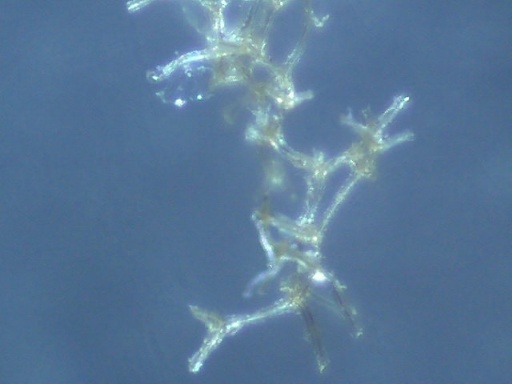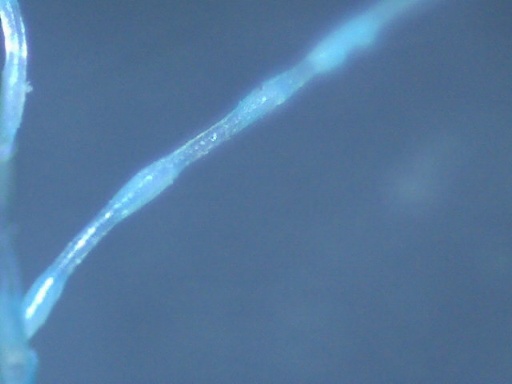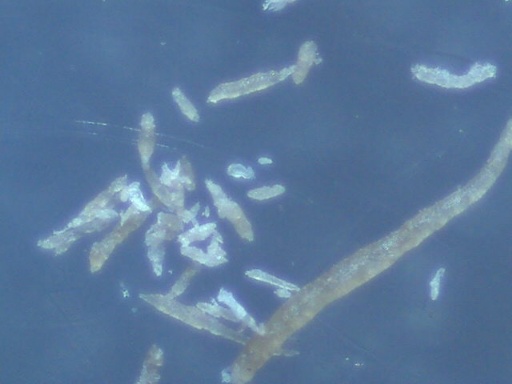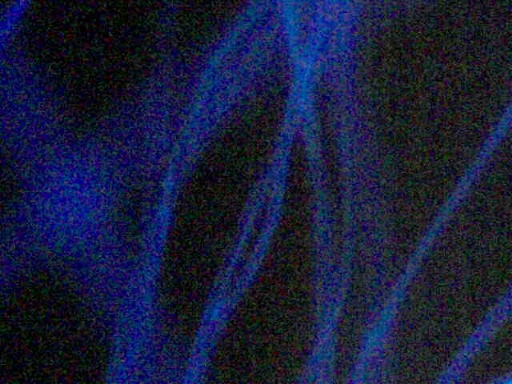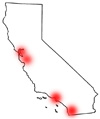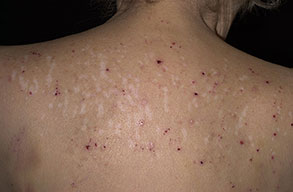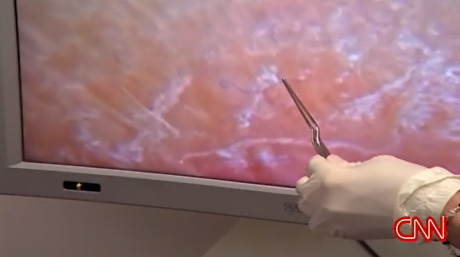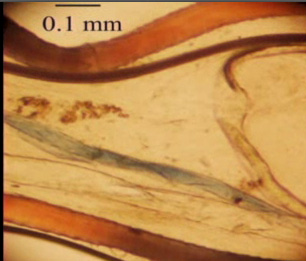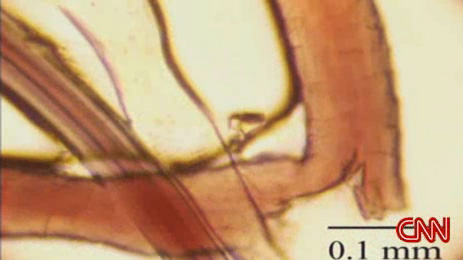OSU is apparently the only place in the world where mainstream researchers are looking into “Morgellons”. The research is being carried out by Professor Randy Wymore as a discretionary project. So far they make two claims:
1) They have extracted fibers from under the skin of Morgellons patients
2) They have been unable to identify the fibers, despite extensive efforts
Here’s the fiber they showed on Primetime:
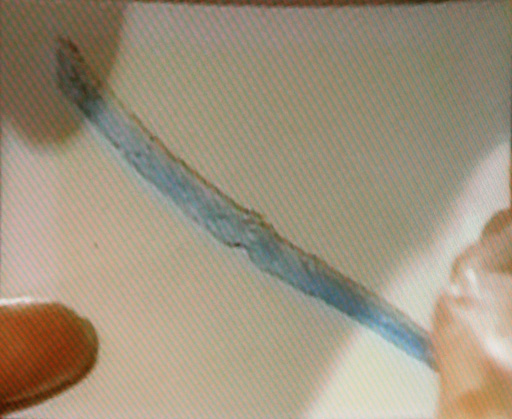
It’s in the hands of a doctor, who they blindsided by handing him this picture and telling him that despite extensive testing, it was like no fiber known to exist.
He handled it rather well, responding “one fiber does not make a new disease”, and we could very well leave it at that, since it sums things up nicely. But let’s take a closer look at the OSU evidence.
Here’s what has been revealed so far:
We have tested three fibers, two blue, one red.
We are completely unable to determine what these fibers are made from, because there is no match in any known databases.
There isn’t even anything that is a close match.
The red fiber is chemically different to the blue fibers.
The blue fibers are chemically identical to each other.
The fibers sat in acid and many other solvents we had for a week, but they did not leach color.
The fibers did not melt or boil when heated to 1400F (760C). They kept their structural integrity, although they did turn black (whereas anything organic would be ash at those temps)
Not, a lot, but at least it’s getting towards some scientific evidence. Unfortunately it really just raises a lot more questions than it answers.
What about some simpler info on the fibers? How wide were they? How long? How ductile were they?
Where did these fibers come from? Different people? What other symptoms did they have?
How were the fibers extracted? Where on the body were they? How many other fibers did the person have?
What parameters were used to search for the fibers in databases? What databases? FTIR? What is the statistical significance of not finding a substance in this database?
What acid was used? How were they heated?
They showed an FTIR graph on the show:
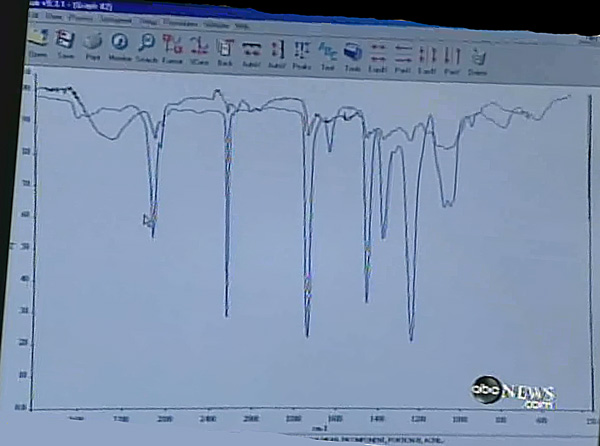
Is this a graph of the mystery material? Unfortunately it’s two graphs overlaid, so you can’t tell much. Why does Wymore not tell us what the peaks were for this fiber?
I could go on, but the point is that this new evidence really suggests almost nothing. If anything the fact that the red and the blue fibers were different suggests that this is NOT something produced inside the body, as that would be much more likely to produce identical fibers.
The high melting point of the fibers suggests it is not organic, which again is a point against it being produced inside the body. It point much more strongly to environmental contamination.
So what we have is three unknown fibers, of unknown origin. The characteristics of these fibers seem to suggest they are not organic, hence were not produced inside the body.
The wider question here is why Dr. Wymore is participating in this media extravaganza? he personally is convinced that “something” is going on with “some” morgellons patients. But refuses to say why. He’s even said he’s “months beyond” trying to explain why. yet he has no problem with appearing on television and hence convincing thousands of vulnerable people that they have a novel pathogen, and should ignore their doctor’s advice.
Wymore is soliciting charitable contributions. He has a responsibility to explain why.
——————————-
Addendum: Here’s another source of chemically treated red white and blue fibers:
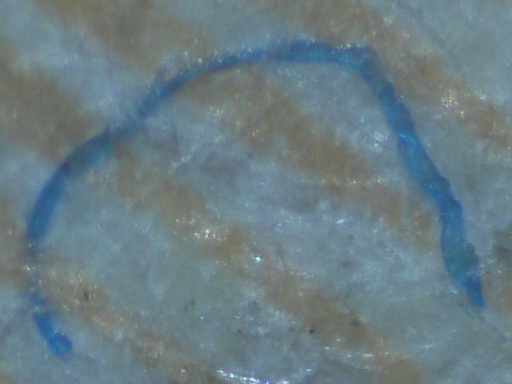
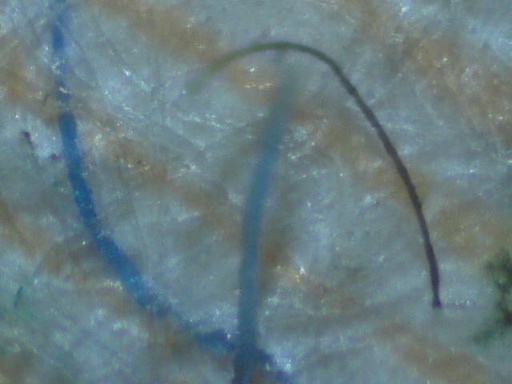
Any guesses?
